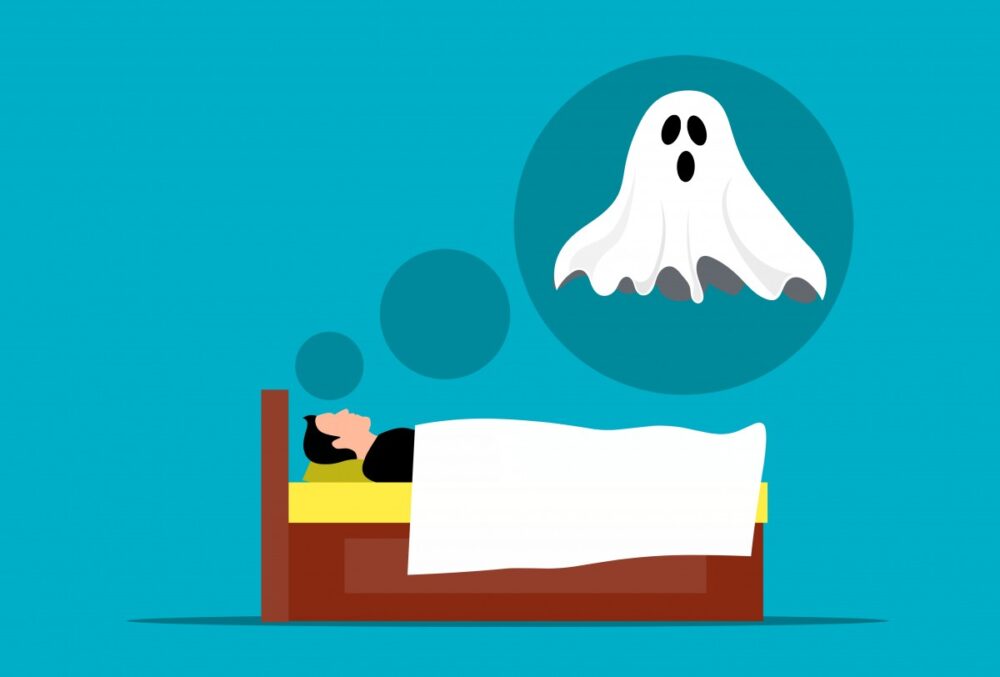Punching, kicking, throwing — not just daytime activities anymore. For some sleepers, these actions accompany their dream states. When a sleeper reflects what they are doing in their dream in real-time, despite being asleep, it’s referred to as “acting out dreams” or REM sleep behavior disorder (RBD). So instead of punching an attacker, they might punch the pillow on their bed. Instead of throwing darts in their dream, they might catapult their stuffed animals across the room.
RBD occurs during the rapid eye movement (REM) stage of sleep, where sleepers often experience vivid and evocative dreams. During normal REM sleep, people tend to enter a type of sleep paralysis in which they cannot move their muscles. In contrast, those who experience RBD do not have such limitations and often move their limbs throughout their dreams. As sleepwalking and talking occur in different stages of sleep, they are not associated with RBD.
“Although RBD may turn people’s dreams into nightmares by creating anxiety about looming brain disease, its role in identifying potential health conditions is a blessing in disguise.”
RBD is thought to result from damage to the brain stem that can occur due to various factors, including accidents and trauma. This damage reduces the body’s ability to prevent actions during sleep, leading to the symptoms of RBD. Michel Jouvet, a groundbreaking researcher, conducted experiments with cats to study RBD. He observed and compared the sleeping patterns of cats with brainstem lesions to those without and found that the cats with damaged brainstems exhibited signs of RBD during their slumber.
Although RBD might seem harmless, it is actually a predictor of various degenerative brain diseases. It often manifests in older adults, particularly men, and is estimated to affect 1% of the population. Several studies have found that RBD is a clinical marker and is highly associated with the onset of a brain disease 10–15 years after the first RBD encounter. In fact, one study done at McGill University found that 73.5% of participants with RBD were diagnosed with a neurodegenerative brain disease 12 years after the start of the study.
RBD primarily predicts neurodegenerative synuclein aggregate disorders, such as Parkinson’s, multiple system atrophy (MSA), and Lewy body dementia, which are characterized by the accumulation of abnormal protein clusters called synuclein aggregates in certain regions of the brain. These specific types of disorders have a large gap between when the disease’s first symptoms begin to show and when the disease fully develops. This period is called the prodromal interval and can last over a decade for these specific types of neurodegenerative disorders.
For other subsets of brain diseases, prodromal periods are often identified through changes in parts of the brain in which the disease functions. In contrast, for neurodegenerative synuclein aggregate disorders, markers of the prodromal period are not limited to the area of the brain that is affected and in fact, are not limited by the brain at all. Motor changes, the onset of mental illness, changes in senses, and RBD are all various effects that mark the onset of these disorders.
The significance of RBD lies in its narrow scope and the specificity of the affected population. While other markers of the prodromal period can affect a large part of the population and happen for many reasons, RBD is a rare occurrence with a high correlation to the onset of certain brain diseases. RBD can help researchers and providers predict and treat brain diseases earlier, which is crucial due to the extensive length of the prodromal period. With RBD as a warning signal, physicians have the time to develop and implement well-thought-out, long-term treatment plans.
Although RBD may turn people’s dreams into nightmares by creating anxiety about looming brain disease, its role in identifying potential health conditions is a blessing in disguise. RBD provides patients and providers with the necessary resources and time to plan for and manage future diseases.
Image courtesy of Pxhere



